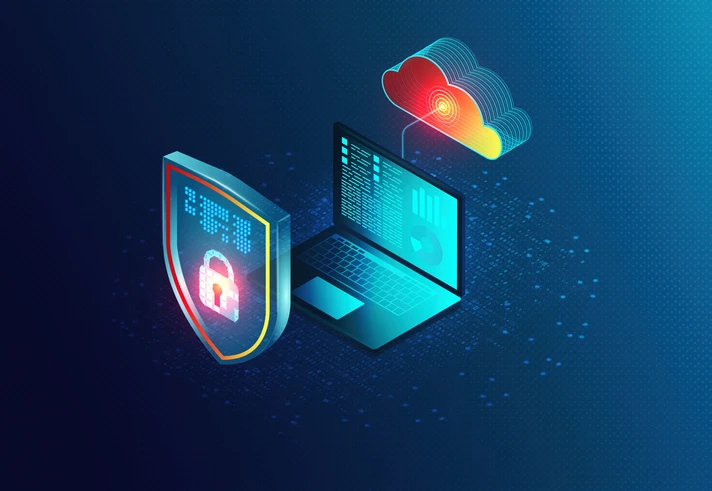Key Differences Between EDR and XDR
As cyber threats continue to evolve, organizations need advanced security solutions to detect and respond to attacks effectively. Two of the most widely used technologies are Endpoint Detection and Response and Extended Detection and Response. While both solutions are designed to enhance cybersecurity, they differ significantly in scope, capabilities, and overall security approach.
- Scope of Protection One of the biggest differences between EDR and XDR is their coverage. EDR is designed specifically to protect endpoints, such as laptops, desktops, and servers. It monitors activities on these devices, detects potential threats, and provides response mechanisms to contain and remediate attacks.
XDR, on the other hand, extends beyond endpoints and integrates security telemetry from multiple sources, including network traffic, cloud environments, email, identity access, and more. This broader visibility allows XDR to detect sophisticated threats that may span across different attack surfaces.
- Data Correlation and Analysis EDR operates primarily at the endpoint level, collecting detailed forensic data to identify malware, suspicious behaviors, and attack patterns. However, it lacks the ability to correlate data across multiple security layers.
XDR enhances detection capabilities by automatically correlating data across various security layers. By combining endpoint, network, cloud, and application insights, XDR provides a ,holistic view of an attack, reducing false positives and improving detection accuracy.
- Threat Detection and Response While EDR offers real-time monitoring and response for endpoint-specific threats, it may not detect sophisticated multi-vector attacks that move laterally across an organization’s infrastructure.
XDR, leveraging machine learning and AI-driven analytics, can detect threats earlier in the attack chain by analyzing data across different security layers. Additionally, XDR automates responses to mitigate threats more efficiently, whereas EDR typically requires more manual investigation and intervention.
- Complexity and Deployment EDR is relatively easier to deploy since it focuses on a specific security domain—endpoints. Most Security Operations Centers (SOCs) are already familiar with EDR solutions, making integration straightforward.
XDR requires a more comprehensive deployment strategy, as it involves multiple security components, including SIEM (Security Information and Event Management) and SOAR (Security Orchestration, Automation, and Response) integrations. However, the added complexity results in better security coverage.
Which Solution is Right for You?
Organizations with limited IT resources or a primary focus on endpoint security may find EDR sufficient. However, companies dealing with advanced threats and complex IT environments will benefit from the extended visibility and automation that XDR provides.
How EDR and XDR Fit Into Your Cybersecurity Strategy
As cyber threats become more sophisticated, organizations must implement the right security solutions to protect their infrastructure. Endpoint Detection and Response and Extended Detection and Response play crucial roles in a layered security approach, but they serve different purposes. Integrating them effectively into your cybersecurity strategy can enhance threat detection, response, and overall resilience.
1. The Role of EDR in Cybersecurity
EDR is a critical first line of defense against endpoint-based threats. It continuously monitors workstations, servers, and other devices, detecting and responding to malware, ransomware, and other advanced attacks. For organizations prioritizing endpoint security, EDR provides:
- Real-time monitoring of endpoint activities.
- Threat intelligence to detect suspicious behaviors.
- Automated response mechanisms to contain attacks before they spread.
When to use EDR:
- If your primary concern is securing endpoints like laptops, desktops, and mobile devices.
- If you need detailed forensic data for incident investigation and threat hunting.
- If you want an affordable, targeted security solution with manageable complexity.
2. The Role of XDR in Cybersecurity
XDR takes cybersecurity beyond endpoints, offering cross-layer detection and response by integrating security telemetry from multiple sources. By analyzing data from networks, email systems, cloud environments, and endpoints, XDR helps:
- Detect multi-stage attacks that traditional tools may miss.
- Correlate security incidents across various platforms to identify hidden threats.
- Automate response actions to reduce attack dwell time and minimize impact.
When to use XDR:
- If your organization needs broader visibility across multiple security layers.
- If you're facing advanced threats like supply chain attacks and APTs (Advanced Persistent Threats).
- If you want to reduce alert fatigue with smarter, AI-driven correlation.
EDR and XDR: A Combined Approach
For many organizations, EDR and XDR work best together. EDR secures endpoints, while XDR extends protection across the enterprise. A combined strategy allows:
- Stronger threat detection by leveraging both endpoint and network intelligence.
- Faster response times through automated incident containment.
- Better compliance with security frameworks requiring holistic protection.
Which Solution is Right for You?
If your cybersecurity strategy focuses primarily on endpoint security, EDR may be enough. However, if your organization needs full-spectrum protection, XDR offers broader coverage and better efficiency. The right approach depends on your risk profile, infrastructure complexity, and security goals.
Which is Better: EDR or XDR?
Choosing between Endpoint Detection and Response and Extended Detection and Response depends on your organization’s security needs, infrastructure complexity, and available resources. While both solutions play a critical role in modern cybersecurity, they serve different purposes and excel in different scenarios.
1. EDR: Best for Endpoint-Focused Security
EDR specializes in detecting and responding to threats at the endpoint level—including workstations, servers, and mobile devices. It provides:
- Real-time monitoring of endpoint activities to detect malware, ransomware, and other attacks.
- Threat intelligence and forensic data to investigate incidents and improve defenses.
- Automated response mechanisms to contain threats before they spread.
Pros of EDR:
- Strong endpoint visibility and control.
- Ideal for organizations with a primarily endpoint-based attack surface.
- Provides detailed forensic insights for security teams.
Cons of EDR:
- Limited visibility into threats beyond endpoints (e.g., network, email, cloud).
- Requires manual investigation in some cases, leading to alert fatigue.
2. XDR: Best for Holistic Threat Detection
XDR extends detection and response beyond endpoints, correlating security data across multiple layers—such as network traffic, cloud applications, and identity access. This approach enhances security by:
- Detecting multi-vector attacks that move across different environments.
- Correlating security alerts from different sources to reduce false positives.
- Automating responses across multiple security domains to minimize dwell time.
Pros of XDR:
- Broader threat visibility across endpoints, network, email, and cloud.
- AI-driven correlation and automation improve detection accuracy.
- Reduces security operations workload by streamlining threat investigation.
Cons of XDR:
- More complex deployment and integration requirements.
- Higher cost due to its comprehensive security approach.
3. Which One Should You Choose?
The decision between EDR and XDR depends on your organization's cybersecurity needs:
- Choose EDR if:
- You need strong endpoint security for devices like laptops and servers.
- Your IT/security team is small and requires targeted security solutions.
- You want a cost-effective way to monitor and respond to endpoint threats.
- Choose XDR if:
- Your organization has a complex IT environment with multiple attack surfaces.
- You need cross-layer security visibility for advanced threat detection.
- You want automated incident correlation to reduce false positives.
Final Verdict: EDR vs. XDR
EDR is a powerful, focused solution for endpoint protection, while XDR offers a broader, more integrated approach to cybersecurity. If your security team struggles with alert fatigue, blind spots, or sophisticated threats, XDR is the better long-term investment. However, for businesses looking to strengthen endpoint security without adding complexity, EDR remains an effective choice.






